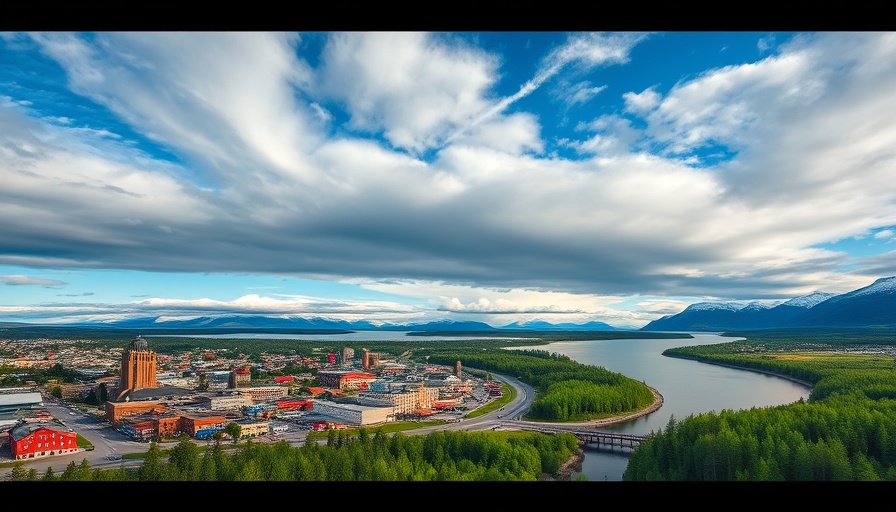
A Guide to Affordable Living in Alaska for 2025
Alaska, known as "The Last Frontier," continues to woo residents with its breathtaking scenery, rich wildlife, and vast outdoor activities. The state is certainly a paradise for nature lovers, boasting incredible locations such as Denali National Park, Glacier Bay, and striking Northern Lights. However, if you have your eye set on moving to this magnificent state, your budget is likely top of mind. With the current median home sale price in Alaska at $382,700, you might wonder: where can you find a home that is both affordable and picturesque?
Fortunately, our exploration leads to nine cities in Alaska where the median home price is under $382,700, making it feasible for those looking to make the jump. Here’s a closer look at these affordable places to call home as we dive into their features, community vibes, and recreational activities.
1. Kenai: The Coastal Gem
Home to stunning beaches and outdoor adventures, Kenai offers a median home price of $296,000. Families can enjoy a median household income of around $74,907, giving them a comfortable lifestyle. With natural attractions like the Kenai Fjords National Park and the scenic view of Kenai Beach, residents are constantly surrounded by beauty. The town's vibrant downtown area also houses local shops and eateries that contribute to its charm.
2. Fairbanks: The Heart of the Interior
Known for its rich culture and diverse community, Fairbanks has established itself as one of the most affordable cities in Alaska. With a median home price of approximately $325,000, this city is a hub for education and innovation, with the University of Alaska Fairbanks located nearby. Fairbanks also offers access to unique events like the World Ice Art Championships.
3. Palmer: The Agricultural Hub
Regarded for its agricultural heritage, Palmer comes in with a median home price of $350,000. This city is famous for annual events like the Alaska State Fair, attracting both locals and visitors. Palmer also emphasizes community and provides a family-friendly atmosphere with a myriad of parks and recreational facilities.
4. Soldotna: The Fishing Capitol
Famous for its fishing opportunities, Soldotna has a median home price hovering around $315,000. This town offers an ideal base for outdoor enthusiasts who want to explore the Kenai River and its tributaries. With a strong sense of community, annual events, and glowing reviews from residents, Soldotna is a top contender for affordable living in Alaska.
5. Wasilla: The Growing City
Wasilla has seen significant growth over the years, with a median home price of about $310,000. As an expanding community, it offers a mix of suburban charm and access to urban amenities. Its location provides convenient access to Anchorage, while still maintaining a quieter life with parks and family-friendly activities.
6. Anchorage: The Urban Oasis
Although Anchorage has higher home prices, certain neighborhoods offer properties under $382,700. Anchorage’s unique blend of urban and natural beauty attracts those wanting to embrace city life while still having quick access to the outdoors, making it a sought-after destination for first-time homebuyers.
7. North Pole: A Winter Wonderland
A fun fact! North Pole is the name of a real place in Alaska. It offers a median home price of $260,000, making it one of the most affordable areas. With a festive atmosphere, particularly during the holiday season, North Pole boasts a close-knit community feel and local events that welcome families.
8. Delta Junction: The Gateway City
With its median home price around $200,000, Delta Junction is home to many beautiful landscapes and outdoor recreational opportunities. The community is tight-knit, largely focusing on agriculture and tourism, and offers a quieter pace of life, ideal for those looking to escape into nature.
9. Kodiak: An Island Community
Known for its native Alutiiq culture, Kodiak offers a median home price of $375,000. This island city beautifully blends a strong maritime environment with lush forests, making it an appealing locale for nature lovers. Kodiak's rich history and breathtaking landscapes make it a unique place to settle down.
Making the Move: Factors to Consider
Considering a move to one of these cities? It's essential to reflect on what you value in a community. While home prices are a crucial factor, think about the amenities, schools, and overall lifestyle each location offers. As you embark on this journey, tools like Redfin or Zillow can facilitate your property search, allowing you to navigate through listings tailored to your budget and preferences.
Multiple aspects matter when deciding where to live, from outdoor access and cultural opportunities to the educational system of the town. Each affordable city presents its unique lifestyle opportunities, ensuring deeper roots in the Alaskan wilderness.
Start your house hunting today. Explore various real estate websites like Trulia or Realtor.com to find your dream home in these appealing municipalities.
 Add Row
Add Row  Add
Add 



Write A Comment